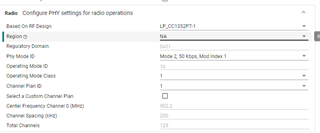Other Parts Discussed in Thread: CC1354R10, CC1352P7, SK-AM64B, CC1354P10
Tool/software:
Hello,
I previously worked with the CC1101 and referenced the now-deprecated Low Cost Mesh Network design guide. I am currently exploring TI’s best available ISM band wireless solution for a new project that requires multi-hop routing and self-discovery for a mesh network, but I would prefer not to develop the full stack from scratch.
Could someone from TI advise on the best chip that supports this out of the box, or the recommended solution for implementing a multi-hop mesh network using TI products? Additionally, I would like to connect with a Field Application Engineer (FAE) or Sales Representative to discuss potential options privately.
I appreciate your guidance.
Thanks,
Alex



